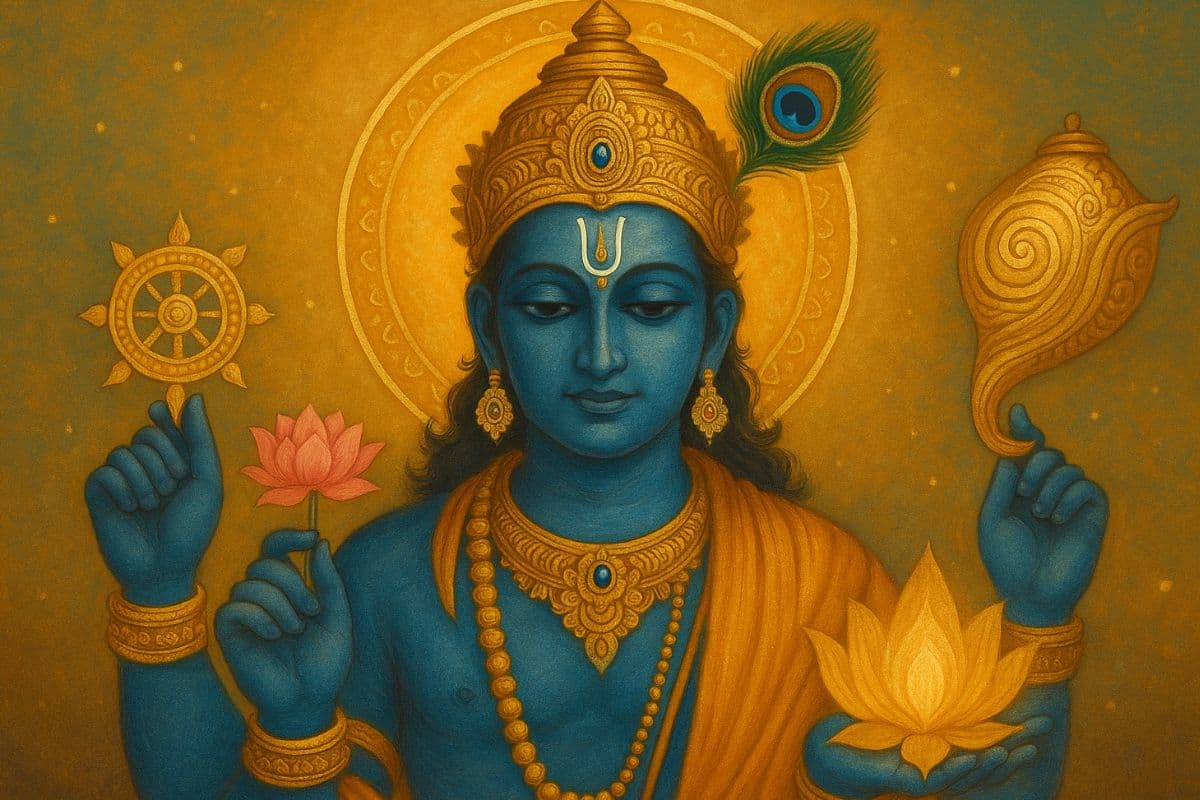Spiritual Power of Yogeshwara Dwadashi 2025: Fasting, faith, and divine awakening

Learn Yogeshwara Dwadashi 2025’s date, rituals, mantras, and divine benefits
November brings a day of deep spiritual transformation: Yogeshwara Dwadashi. Celebrated right after Dev Uthani Ekadashi, this sacred festival represents the victory of light, faith, and divine love. In 2025, it falls on November 2, a day when fasting and prayer can open the door to both material and spiritual abundance. This auspicious occasion marks the sacred marriage of Lord Vishnu and Goddess Tulsi, symbolising the harmony between discipline and devotion. Worship on this day invites divine blessings, removes inner restlessness, and restores balance in life.
What is Yogeshwara Dwadashi?
Yogeshwara Dwadashi occurs on the twelfth day of the bright fortnight (Shukla Paksha) in the month of Kartik. The name Yogeshwara refers to Lord Krishna, the master of divine knowledge and yoga.
This day is dedicated to Lord Vishnu, Goddess Lakshmi, and Tulsi Devi. It is believed that on this date, Lord Vishnu took the form of Shaligram and married Tulsi, making it one of the most sacred and symbolic unions in Hindu tradition. The Tulsi Vivah performed on this day represents the eternal bond between devotion and divinity.
Why Yogeshwara Dwadashi is Celebrated
On Yogeshwara Dwadashi, Lord Vishnu, along with Goddess Lakshmi and Lord Brahma, visits Vrindavan, the abode of Tulsi Devi. It is also the day Lord Vishnu accepted Tulsi as his consort, blessing her presence in every Hindu home. The celebration of Yogeshwara Dwadashi reminds devotees that true wealth lies in purity, gratitude, and devotion. The rituals performed today help purify the mind, calm emotions, and connect the soul with divine energy.
When is Yogeshwara Dwadashi 2025?
This year, Yogeshwara Dwadashi will be celebrated on Sunday, November 2, 2025. The day follows Dev Uthani Ekadashi, when Lord Vishnu awakens from his divine rest. Yogeshwara Dwadashi marks his descent into Vrindavan, a time when prayers, vows, and devotion reach their highest potency.
Auspicious Time for Yogeshwara Dwadashi Puja
The energy of this day is strongest during the following Choghadiya periods, when performing puja brings the greatest blessings:
Labha (Gain): 9:19 am to 10:42 am
Amrita (Best): 10:42 am to 12:04 pm
Shubha (Good): 5:35 pm to 7:13 pm
Amrita (Best): 7:13 pm to 8:50 pm
These are ideal for Vishnu Puja, Tulsi Vivah, and chanting Om Namo Bhagavate Vasudevaya or Om Sri Lakshmi-Narayanaya Namah with devotion.
Significance of Yogeshwara Dwadashi
Yogeshwara Dwadashi is a festival of divine awakening. It marks the time when inner clarity replaces confusion and faith overcomes doubt. Worshipping Lord Vishnu and Tulsi on this day helps dissolve negative karma and opens the path to prosperity, harmony, and spiritual peace. It is said that the entire month of Kartik belongs to Lord Vishnu, but this day holds special power. Fasting and worshipping during Yogeshwara Dwadashi purify not just the body, but also the heart.
Yogeshwara Dwadashi Puja Rituals and Offerings
The rituals performed on Yogeshwara Dwadashi hold deep spiritual significance. Every step of the puja, from lighting a lamp to offering flowers, symbolises devotion and renewal. Performing these sacred acts with sincerity brings peace, prosperity, and divine blessings into the home. The day’s energy is gentle yet powerful, encouraging calm focus and heartfelt prayer.
-
Begin the day early with a purifying bath and wear clean, traditional clothes.
-
Sprinkle Ganga water around the puja area to cleanse and sanctify the space.
-
Light ghee lamps to invite divine energy and positivity.
-
Offer essential puja items such as roli, rice, honey, fruits, sweets, and flowers.
-
Recite Vishnu Sahasranama or chant simple Vishnu mantras with full devotion. Chanting Om Jai Jagdish Hare and Mahamrityunjaya Mantra brings calmness, clarity, and inner protection. Listen and chant along on AstroSure.ai for guidance and spiritual strength.
-
Worship Tulsi Devi by offering flowers, lighting diyas, and singing devotional bhajans.
-
Perform the Tulsi Vivah ritual with faith to attract blessings of harmony and abundance.
Benefits of Yogeshwara Dwadashi Puja
Worshipping with sincerity on this day brings:
-
Peace and Prosperity: Lord Vishnu’s blessings enhance stability and wealth.
-
Marital Harmony: Couples experience deeper love and understanding.
-
Purification of Karma: Old emotional and spiritual burdens are released.
-
Divine Protection: Devotees gain clarity, strength, and protection from negativity.
What to Do on Yogeshwara Dwadashi
Begin the day with a purifying bath and wear clean clothes. Offer prayers to Lord Vishnu and Tulsi Devi. Participate in or witness a Tulsi Vivah ceremony. Donate food, clothes, and lamps to the needy.
Read the Tulsi Mahatmya or listen to devotional stories of Lord Vishnu’s compassion. Light diyas around the house in the evening to invite divine blessings.
What Not to Do on Yogeshwara Dwadashi
Avoid non-vegetarian food, alcohol, anger, and gossip. Do not harm living beings or speak harshly. Keep your mind peaceful and focus on positive thoughts. The true goal of this day is not ritual alone, but cultivating compassion and mindfulness.
The Deeper Meaning of Yogeshwara Dwadashi
Lord Krishna, known as Yogeshwara, embodies the perfect blend of wisdom, devotion, and action. In the Mahabharata, he took up a chariot wheel to protect his devotee Arjuna, proving that divine love goes beyond promises and logic. Yogeshwara Dwadashi carries the same message. It reminds us that devotion is not about fear or ritual, but about surrender and faith. When we light a lamp before Tulsi on this day, we are not just performing a tradition. We are symbolically igniting our own consciousness, asking it to stay bright even when life feels uncertain. Yogeshwara Dwadashi is a day to let the heart lead. Worship with gratitude, act with sincerity, and let divine love fill your home and soul.



